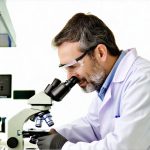Prostatitis represents a significant health concern for men worldwide, impacting quality of life due to symptoms ranging from painful urination to chronic pelvic pain. Understanding this complex condition has been historically challenging due to its varied presentations and often elusive causes. Recent research is shedding new light on the underlying mechanisms driving prostatitis, leading to advancements in diagnostic approaches and potential therapeutic strategies beyond traditional methods. This article aims to explore these latest developments, providing an overview of current understanding and emerging trends in prostatitis research and treatment.
The classification of prostatitis into four categories – acute bacterial, chronic bacterial, chronic prostatitis/chronic pelvic pain syndrome (CP/CPPS), and asymptomatic inflammatory prostatitis – acknowledges the diverse nature of the illness. While acute bacterial prostatitis is relatively straightforward to diagnose and treat with antibiotics, the chronic forms pose a greater challenge. CP/CPPS, in particular, accounts for the majority of cases and often involves complex interplay between inflammation, nerve dysfunction, and psychological factors, making targeted treatment difficult. The following sections will delve into recent research and evolving approaches aimed at improving outcomes for men living with these conditions.
Understanding Prostatitis Subtypes & Etiology
The complexities surrounding prostatitis are largely due to its heterogeneous nature. Research is increasingly focused on moving beyond simple categorization and exploring the underlying biological mechanisms specific to each subtype. For example, chronic bacterial prostatitis is now being investigated in terms of biofilm formation by bacteria within the prostate gland – a protective layer that reduces antibiotic effectiveness. CP/CPPS remains the most enigmatic, with investigations looking at neuroinflammation and pelvic floor dysfunction as potential key drivers.
Recent studies have highlighted the role of the microbiome—both gut and prostatic—in influencing prostatitis development and symptoms. Alterations in microbial communities can trigger immune responses leading to inflammation and pain, potentially exacerbating chronic forms of the condition. Understanding these intricate relationships is crucial for developing targeted therapies that modulate the microbiome or bolster immune regulation.
Emerging Diagnostic Approaches
Traditional diagnostic methods often rely on symptom assessment, physical examination (including digital rectal exam), urine analysis, and prostate-specific antigen (PSA) testing. However, these can be limited in accuracy, especially for CP/CPPS where laboratory findings are frequently normal. New approaches aim to improve diagnostic precision.
Biomarker Discovery & Analysis
Researchers are actively seeking biomarkers – measurable substances indicating a specific disease state – that could aid in differentiating prostatitis subtypes and predicting treatment response. Several potential biomarkers have been identified including prostatic fluid markers related to inflammation (cytokines, chemokines) and nerve growth factor reflecting neuropathic pain. While still under investigation, these biomarkers offer the promise of more objective diagnosis and personalized treatment strategies.
Advanced Imaging Techniques
Advanced imaging modalities like multiparametric MRI (mpMRI) are gaining traction in prostatitis evaluation. mpMRI can visualize subtle changes within the prostate gland that may not be detected through standard methods, potentially identifying areas of inflammation or structural abnormalities linked to chronic pain. Diffusion-weighted imaging (DWI), a component of mpMRI, is particularly sensitive to inflammatory changes and could help differentiate between bacterial and non-bacterial prostatitis.
Functional Assessments & Pelvic Floor Evaluation
Given the role of pelvic floor dysfunction in CP/CPPS, functional assessments are becoming increasingly integrated into diagnostic workups. These evaluations may include measurements of pelvic floor muscle strength, endurance, and coordination, as well as assessment of pain provocation with palpation or movement. Biofeedback therapy, guided by these assessments, can be used to retrain pelvic floor muscles and alleviate symptoms.
The ongoing research into the etiology and diagnostics of prostatitis is paving the way for more effective treatments beyond traditional antibiotic approaches. While antibiotics remain a cornerstone in acute bacterial prostatitis and chronic bacterial prostatitis (where appropriate), treatment strategies for CP/CPPS are evolving to address the multifaceted nature of this condition. Emphasis has shifted towards multimodal therapies that combine pharmacological interventions with physical therapy, lifestyle modifications, and psychological support. Further research is needed to refine these approaches and personalize treatments based on individual patient characteristics and underlying mechanisms driving their symptoms. The future of prostatitis management lies in a deeper understanding of its complexities and the development of targeted, individualized treatment plans.





















